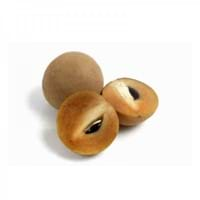Health Benefits
Anti-inflammatory properties, Arthritis treatment, Regulates Blood Sugar, Unknown
Cancer prevention, Diarrhea treatment, Muscle pain relief, Piles treatment, Prevents constipation, Skin cleansing, Ulcer treatment
General Benefits
Boosts immune system, Controls blood sugar levels, Digestive aid
Controls blood pressure, Digestive aid, Maintains healthy cholesterol level, Strengthens bones
Skin Benefits
Nourishes skin, Protects skin from oxidative stress
Anti-aging benefits, Hydrates skin, Skin rejuvenation
Hair Benefits
Prevents hair loss, Promotes longer and healthier hair, Regulates hair growth
Prevents hair loss, Shiny hair, Softening mask
Allergy Symptoms
Asthma, Red rash, Swelling of mouth, tongue or lips
Abdominal pains, Decrease in blood pressure, Dizziness, Hives, Itching of mouth, Lightheadedness, Swelling, Swelling of mouth, tongue or lips, Weak or racing pulse, Wheezing
Side Effects
Diarrhoea, Vomiting
Headache, Intense headache, Tooth decay
Best Time to Eat
As a snack in the late afternoon
As a snack in the late afternoon, Don't consume at night and before bed, Eat the fresh ones, avoid mixing with any other foods, don't eat after meal.
Vitamin B5 (Pantothenic Acid)
Vitamin C (Ascorbic Acid)
Vitamin E (Tocopherole)
Not Available
Vitamin K (Phyllochinone)
Not Available
Lutein+Zeaxanthin
Not Available
Phytosterol
Not Available
Calories in Fresh Fruit with Peel
Calories in Fresh Fruit without Peel
Not Available
Calories in Juice
Not Available
Calories in Jam
Not Available
Calories in Pie
Not Available
Type
Berry
Berry, Tropical
Season
Winter
All seasons
Varieties
Bush Table Queen, Heirloom Table Queen, Festival Hybrid, Early Acorn Hybrid, Table Ace, Ebony and Cream of the Crop
Cavendish Bananas, Lady Finger Bananas, Pisang Raja, Williams Bananas and Cooking Bananas
Seedless Variety
Not Available
Yes
Color
Dark green, Green-yellow, Orange green
Green, Yellow
Inside Color
Not Available
White
Shape
Round
Curving Cylinder
Origin
Central America, North America, Unknown
Papua New Guinea
Soil Type
Well-drained
Well-drained
Climatic Conditions
Cold, Sunny
Warm
Facts about
- It was named as Acorn Squash for its resemblance to a large ribbed acorn.
- It is said that squash was being grown in Mexico as long as 10,000 years ago.
- It was the first food cultivated by native American Indians.
- As bananas contain potassium-40 which is radioactive isotope of potassium, bananas are radioactive.
- Bananas float in water.
- There are around 1000 varieties of bananas.
- Eating this fruit will cheer you up.
Spirits
Not Available
Yes
Cocktails
Not Available
Yes
Other Countries
Egypt, India, Iran, Italy, Mexico, Russia, Turkey, Ukraine, United States of America
Brazil, Cameroon, China, Colombia, Ecuador, Ghana, Indonesia, Philippines, Uganda
Top Exporter
India
Ecuador
Botanical Name
Cucurbita Pepo
Musa acuminata and Musa balbisiana
Synonym
Winter Squash
Musa × dacca , Musa × sapidisiaca , Musa × sapientum
Subkingdom
Tracheobionta
Tracheobionta
Division
Magnoliophyta
Magnoliophyta
Class
Magnoliopsida
Liliopsida
Subclass
Dillenhidae
Liliidae
Order
Cucurbitales
Zingiberales
Family
Cucurbitaceae
Musaceae
Species
Pepo
M. acuminata , M. balbisiana
Generic Group
Not Available
Banana
Difference Between Sapota and Banana
We might think that Sapota and Banana are similar with respect to nutritional value and health benefits. But the nutrient content of both fruits is different. Sapota and Banana Facts such as their taste, shape, color, and size are also distinct. The difference between Sapota and Banana is explained here.
The amount of calories in 100 gm of fresh Sapota and Banana with peel is 40.00 kcal and 95.29 kcal and the amount of calories without peel is Not Available and 89.00 kcal respectively. Thus, Sapota and Banana belong to Low Calorie Fruits and High Calorie Fruits category.These fruits might or might not differ with respect to their scientific classification. The order of Sapota and Banana is Cucurbitales and Zingiberales respectively. Sapota belongs to Cucurbitaceae family and Banana belongs to Musaceae family. Sapota belongs to Cucurbita genus of Pepo species and Banana belongs to Musa genus of M. acuminata , M. balbisiana species. Beings plants, both fruits belong to Plantae Kingdom.









